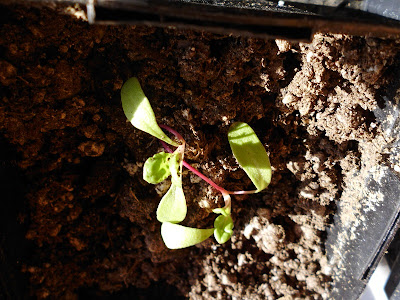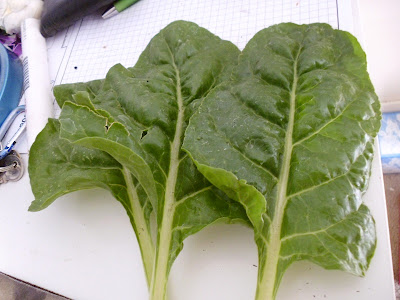Swiss Chard is one of my favorite vegetables. It is a member of the beet family. These seeds readily germinate, but getting the plant to establish itself in warm months isn't easy. I would recommend keeping the plant inside while it is young. Once it gets going, keep it outside. The plant will keep producing leaves, so harvest the plant down to 5 leaves to ensure it can regrow its lost ones optimally.
Leaves can be eaten raw, steamed, boiled, sauteed, and possibly other ways. One of my favorite ways to eat chard is to chop up leaves and stems and throw them into a pan with olive oil and garlic. Another way you can prepare chard is to bake them into vegetable chips.
Buy Fordhook Giant Swiss Chard Seeds
Annual or Perennial?: Perennial (biennial)
Germination time: 7-14 days
Days until maturity: 50 days
Light requirements: Full Sun (6+ hrs)
Plant size: Medium
Spacing: 12 inches
Temperature: Cool/Warm
Difficulty: Easy
Traits: Regrows harvested leaves quick
Companion plants: Swiss Chard is a member of the beet family, so avoid planting near pole beans.
Special needs: Harvest often to encourage new leaf growth.
When to plant: It's recommended to plant this either in early fall or early spring, but it can be grown year round. Tolerates both heat and cold.
How to grow: Plant seeds in soil. Seed pods contain multiple plants, so thin out the weakest plants once true leaves begin to form. Water regularly.
How to harvest: When leaves are big enough (about the size of your palm), cut outside leaves from the base of the plant. Leaves grow back for a continuous harvest.
Photos:
 |
| Seed |
 |
| Seedling |
 |
| 1 week old |
 |
| 2-3 weeks old |
 |
| 4 weeks old |
 |
| 7 weeks old (can be harvested) |
 |
| If you let it grow more |
 |
| Harvested Chard |
 |
| More leaves |
 |
| Even more leaves |


The posted photos of the various stages of growth and when to begin harvest is valuable to know. Thanks for sharing with us.
ReplyDelete